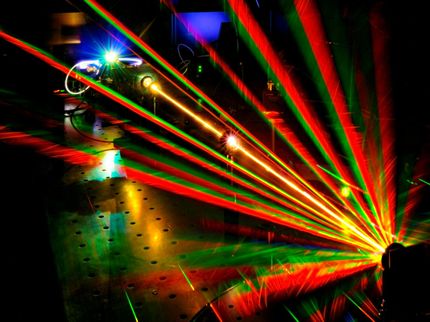Harnessing the power of light to tackle asymmetrical molecules
Advertisement
No, molecules do not actually have hands. But scientists refer to them in this way when looking at asymmetric molecules that are mirror images of one another and therefore are not superimposable. Whether a molecule is a "lefty" or "righty" also influences how they behave -- critical information for researchers.

FSU researchers used light to turn a left-handed molecule into a right-handed one
Assistant Professor of Chemistry Ken Hanson
Now a team of Florida State University researchers has found a way to turn a "left-handed" molecule into a "right-handed" one -- a process that could have important implications for drug development.
Assistant Professor Ken Hanson and his team explain how a left-handed molecule could be turned into a right-handed one by way of a light-induced proton transfer.
"This means we wouldn't have to throw half of a chemical solution away when we only want the right-handed molecules," said Hanson.
The lack of understanding of chirality or the property of asymmetry in molecules has had severe consequences in the past.
In the 1950s, a sedative called thalidomide was sold in Europe as a treatment for morning sickness. It was later discovered that while the right-handed molecule for thalidomide was effective, the left-handed one was toxic. Thousands of children of mothers who took the drug were born with severe birth defects.
Because of this and other cases, pharmaceutical companies are hyper focused on the left-hand versus right issue in their drug screening process.
"Since handedness matters in biology, it's very important in drug design and discovery," Hanson said.
In this study, Hanson used an organic compound called BINOL and attached a left-handed amino acid to it. Then, the team shone light directly on the compound.
This altered a 50-50 mixture of left and right-handed BINOL into a predominantly right-handed mixture. The right-handed BINOL can then be used as catalyst to generate a broad range of drugs with a specific handedness.
Hanson said that his research team plans to follow up by refining the process and creating a purer sample.
"This study was just a proof of concept to show that it could be done," Hanson said.
























































